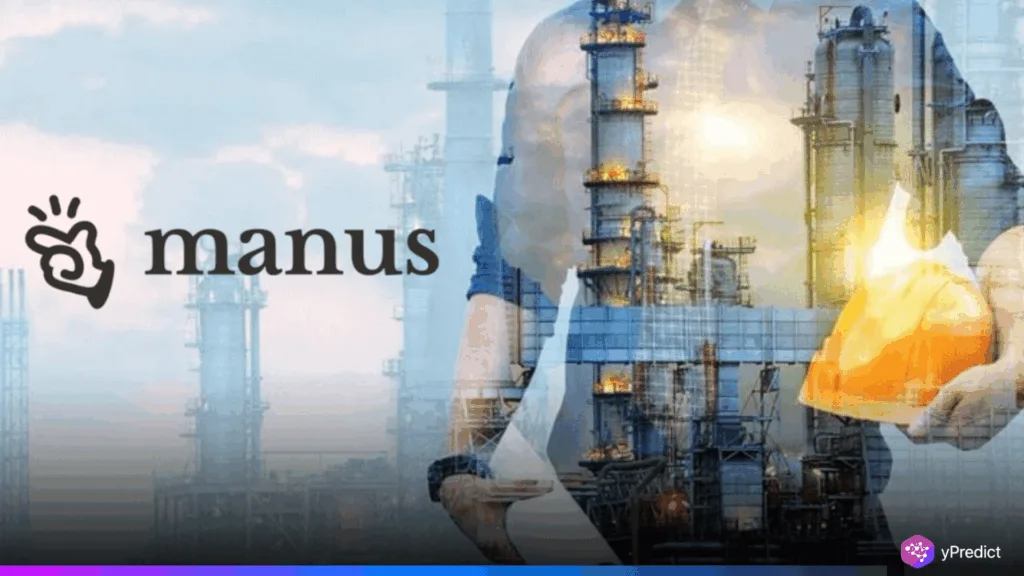
Manus’ founder reveals key lessons from the evolution of AI agents, including how context engineering AI shapes reliable agent behavior. The Manus team developed top frontier models in response to the dilemma of choosing between in-context learning and fine-tuned models.
The system’s resilience and iteration speed were significantly enhanced by their wager on context-driven architecture. Thus, Manus’ journey reveals how intelligent design can get beyond LLM constraints and scale AI agents efficiently. It can include memory optimization as well as managing long contexts.
How Does Context Engineering AI Boost Agent Speed?
Manus gained an advantage in context engineering AI by designing around the KV-cache to reduce latency and cost. The context quickly expands when AI agents interact in loops. When outputs are brief, like in structured commands, prefilled tokens predominate.
Additionally, Manus avoids dynamic edits, uses append-only logs, and maintains stable prompts to maximize cache hits. For prefix caching to be maintained, even JSON key orders are maintained. A minor alteration, like time stamps, can destroy cache savings. As a result, their agents are quicker and less expensive.
Additionally, Manus addressed cache invalidation issues brought on by switching tool selection. The system masks token logits instead of deleting tools in the middle of a task. Thus, this dynamically guides actions while maintaining the toolset. Masking lowers schema errors and stops hallucinated calls. The agent makes decisions based on the situation, even though their approach guarantees that tools are always visible.
File System Memory Makes Agents Context-Aware
Memory constraints still exist even with context windows now reaching 128K tokens. The output quality may suffer if the model is overloaded with observations, especially from websites or PDFs. Thus, the file system is used by Manus as organized external memory.
Manus writes data to files that it can later recall rather than truncating it, which is dangerous. This prevents the token count from growing while maintaining access to important information. It allows context to shrink without erasing data permanently by storing URLs, file paths, or summaries.
This memory design helps achieve more general objectives. Additionally, the agent scales across sessions and improves state tracking by treating the filesystem as context. The method seeks to externalize memory in the manner of early Turing machines, taking inspiration from theoretical State Space Models. Manus’ architecture may allow for useful, long-term reasoning, even though SSMs have trouble with lengthy dependencies.
Manus makes use of natural attention mechanisms to enhance planning. It continuously updates a todo.md file, reciting objectives in plain text after each context. Consequently, this technique combats goal drift, particularly in multi-step tasks. The agent maintains focus regardless of how long the loop lasts by reinforcing goals in recent tokens.
Can Errors Make Agents More Reliable?
Manus made the overlooked observation that OS logs failed steps. The agent learns from bad actions instead of deleting them. The model adapts when it sees an error. Failures are feedback loops that stop repetition, not defects.
Therefore, most benchmarks that assume ideal conditions lack this resilience. However, failures must be learned from rather than concealed if real-world AI agents are to succeed. Manus demonstrates that agent quality is defined by recovery behavior. Diversity is essential for the future.
Agents may become locked into repetitive behavior by few-shot prompting, particularly when reviewing similar inputs. Manus gets around this by introducing minor formatting or wording changes. Thus, output integrity is preserved and blind mimicry is disrupted. The future of AI agents lies not in more training but in better-designed, flexible contexts.
Will Context Engineering AI Define Future Agent Success?
The Manus journey demonstrates that Context Engineering AI is fundamental to agent performance and goes beyond prompt tuning. They created an agent system that is robust and scalable by concentrating on caching, memory management, and dynamic tool selection. These insights came from user feedback and continuous iteration rather than theory. As AI develops, the control surface shifts from the models to the context.






